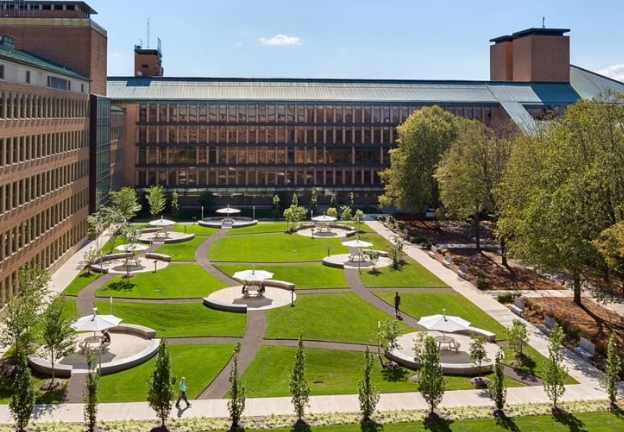Sustainable design is an essential practice in today’s corporate landscape architecture to create environmentally-friendly and aesthetically pleasing outdoor spaces.
Creating Green Spaces in Urban Environments
Corporate landscape architects play a crucial role in designing green spaces within urban environments to combat the heat island effect and improve air quality. They incorporate native plants, green roofs, and permeable surfaces to reduce heat absorption and water runoff.
Promoting Biodiversity and Habitat Preservation
Sustainable design in corporate landscape architecture also focuses on promoting biodiversity and preserving natural habitats. Designers integrate elements such as birdhouses, bee hotels, and butterfly gardens to provide shelter and food for wildlife.
Embracing Renewable Energy Sources
Incorporating renewable energy sources such as solar panels and wind turbines into corporate landscape design helps reduce the carbon footprint of buildings. Landscape architects strategically place these elements to maximize energy production while enhancing the overall aesthetic of the space.
Utilizing Recycled and Reusable Materials
To minimize waste and promote sustainability, designers use recycled and reusable materials in their projects. From recycled plastic furniture to reclaimed wood decking, these materials add character to outdoor spaces while reducing the environmental impact of construction.
Implementing Water Conservation Strategies
Water conservation is a key aspect of sustainable design in corporate landscape architecture. Designers use techniques like rainwater harvesting, graywater recycling, and drought-tolerant plants to minimize water usage and promote efficient irrigation practices.
Creating a Harmonious Connection Between People and Nature
Ultimately, the art of sustainable design in corporate landscape architecture aims to create a harmonious connection between people and nature. By incorporating principles of sustainability and environmental stewardship, designers can create outdoor spaces that enhance well-being, foster creativity, and promote a sense of community among employees and visitors.

